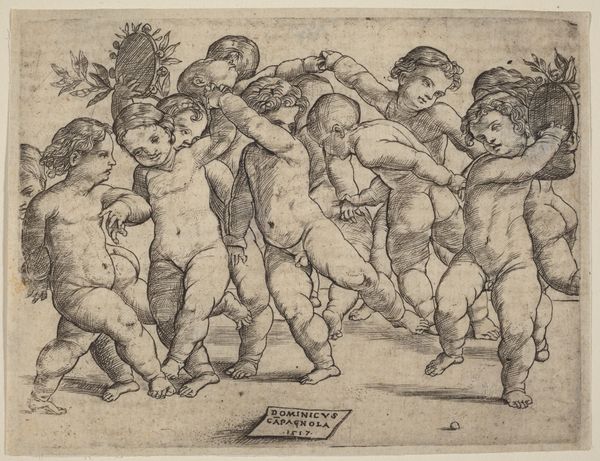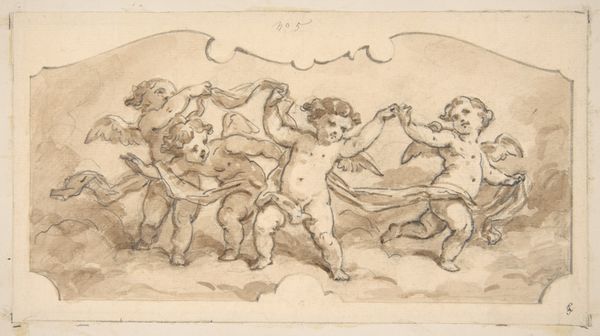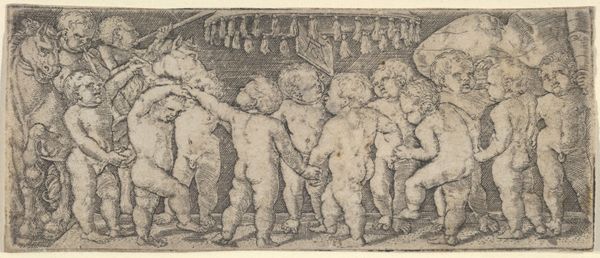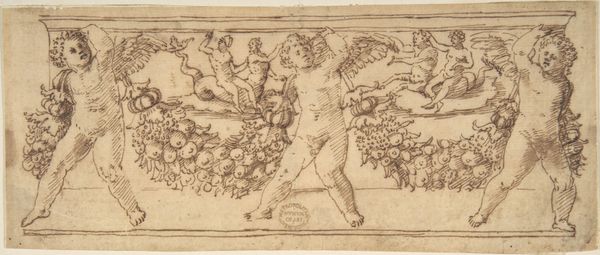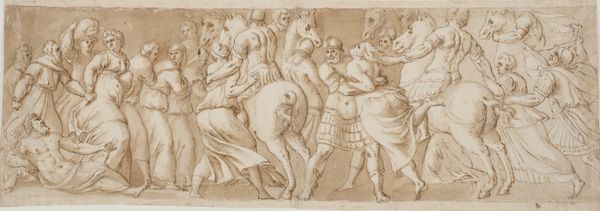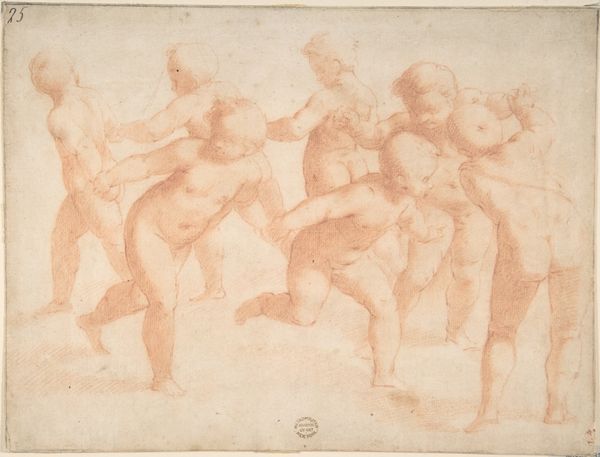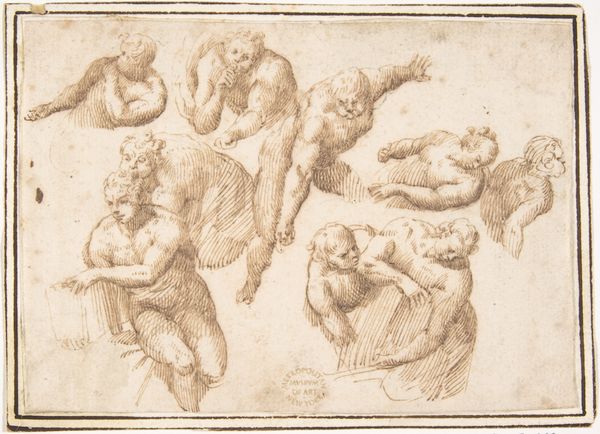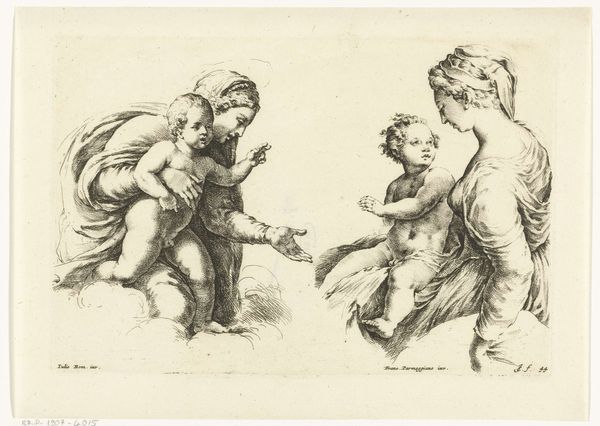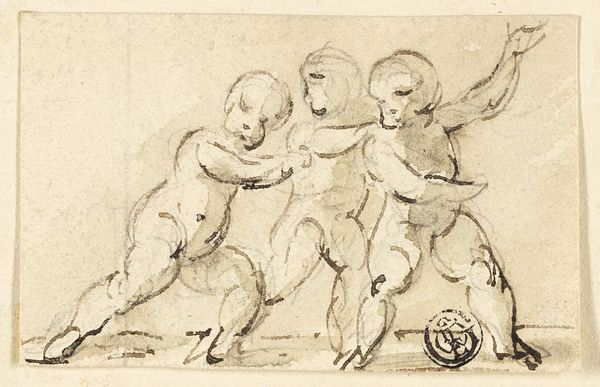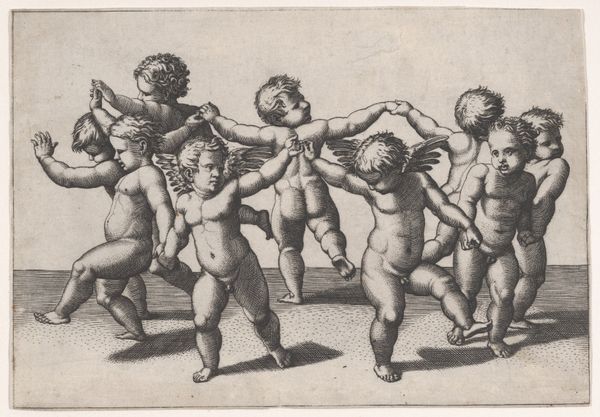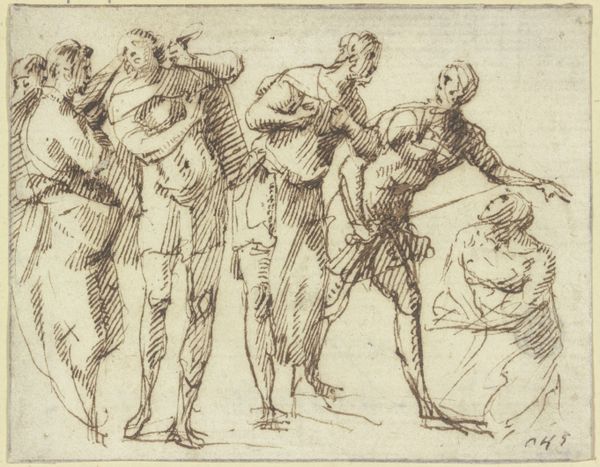
drawing
#
drawing
#
figuration
#
11_renaissance
#
genre-painting
#
italian-renaissance
Dimensions: sheet: 4 3/8 x 7 13/16 in. (11.1 x 19.8 cm)
Copyright: Public Domain
Amico Aspertini made this drawing, Five Dancing Putti, using pen and brown ink on paper, likely in the first half of the 16th century in Bologna. The putto, a chubby male child, is a common motif in Italian Renaissance art, representing innocence, playfulness, and divine love. Here, Aspertini’s putti are depicted in a lively dance, evoking a sense of joy and carefree abandon. The drawing's composition and style reflect the influence of classical antiquity, combined with a uniquely Emilian playfulness. During the Renaissance, art academies and workshops played a crucial role in shaping artistic production. Artists were trained to emulate classical forms and ideals, while also developing their own individual styles. Aspertini's drawing embodies this tension between tradition and innovation, reflecting the dynamic cultural landscape of Renaissance Italy. As art historians, we might look to archival sources, such as artist biographies, workshop records, and patronage accounts, to gain deeper insights into the social and institutional context in which this drawing was made. Ultimately, this artwork reminds us that artistic creation is always shaped by the cultural forces of its time.
Comments
No comments
Be the first to comment and join the conversation on the ultimate creative platform.

